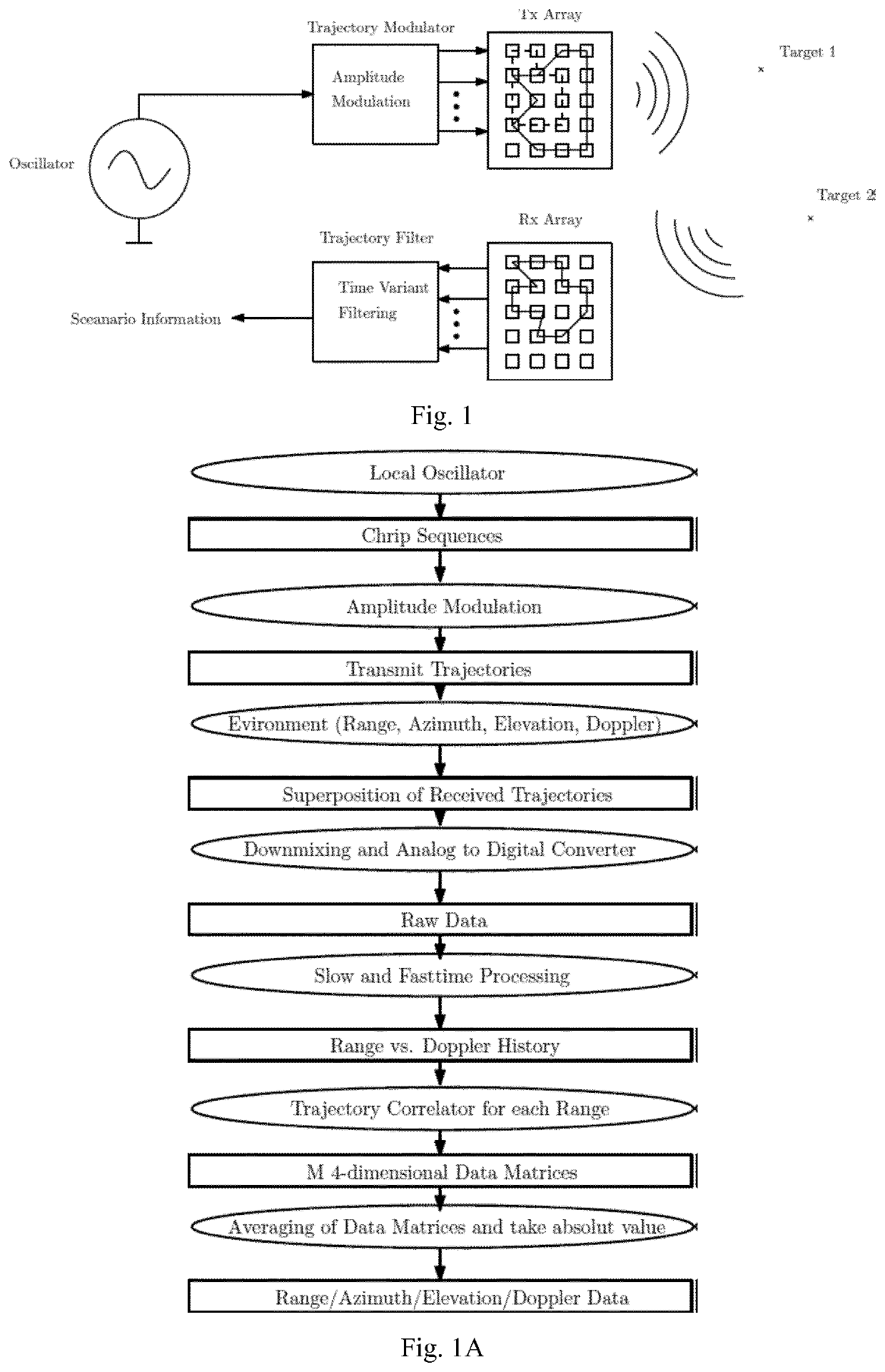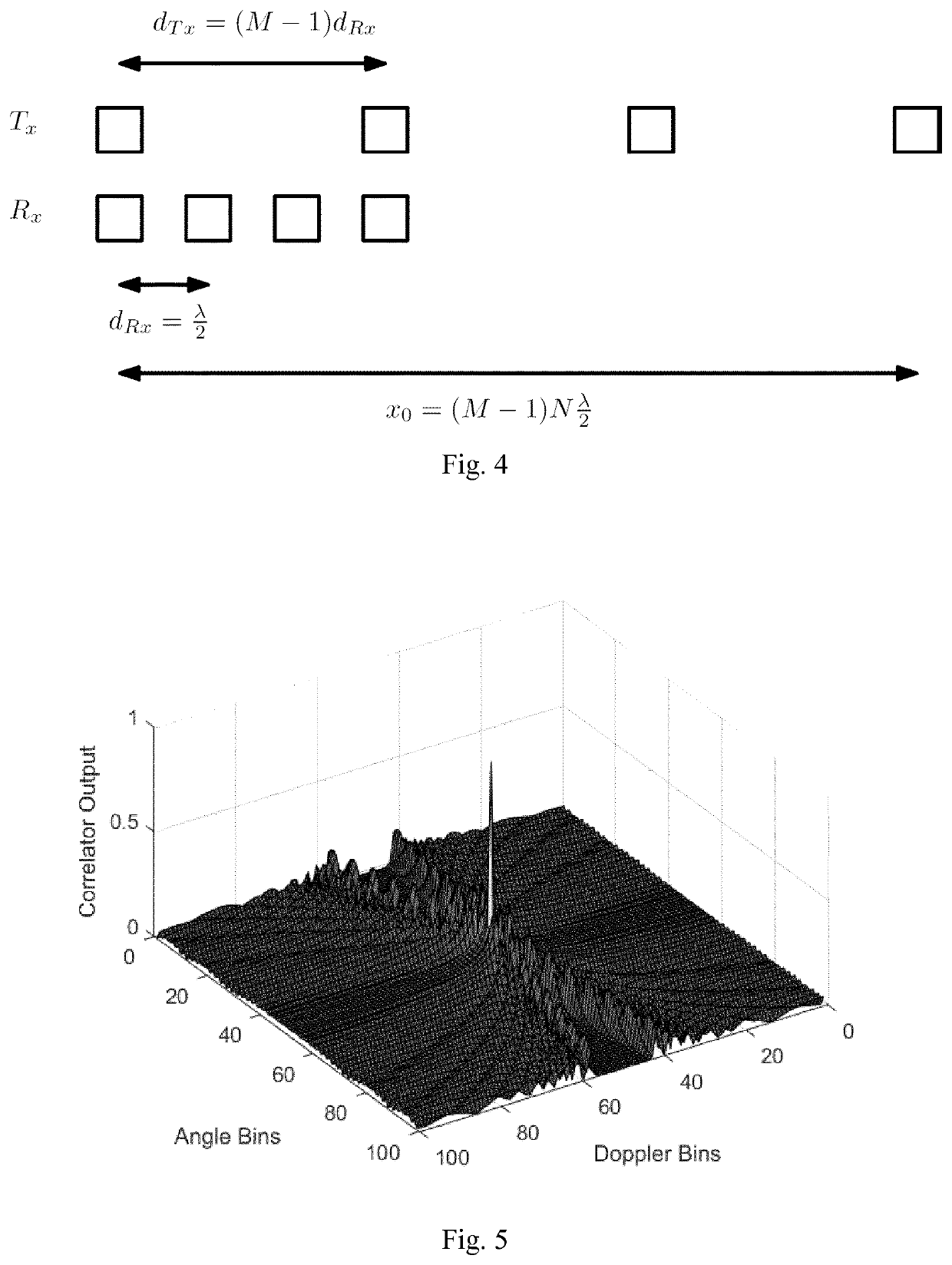Method and system for obtaining angle-doppler signatures in MIMO radars
a technology of mimo radar and signature, applied in the field of wireless detection of objects using mimo radar, can solve the problems of system design, approach works, and angular resolution is physically limited by the total antenna array size, and achieve the effects of reducing angle-doppler ambiguity, less antenna elements, and improving target detection discrimination
- Summary
- Abstract
- Description
- Claims
- Application Information
AI Technical Summary
Benefits of technology
Problems solved by technology
Method used
Image
Examples
Embodiment Construction
[0061]In the following, like numerals will be used to indicate like elements.
[0062]Nonlinear PCM Virtual MIMO
[0063]In order to achieve a nonlinear PCM, either the antenna elements are nonlinearly distributed and switched in equidistant time instances or the antenna elements are linearly distributed and the modulation scheme has be more advanced. Technically speaking, the switching is a binary amplitude modulation (AM). Therefore, a nonlinear PCM is a type of advanced AM. For a detailed investigation, a suitable signal model is used. As PCM can be seen as an AM and a FMCW scheme is used, the system model can be illustrated as in FIG. 1. It will be understood by the skilled person that the FMCW scheme is only used as an example and that the invention is not at all limited to FMCW.
[0064]The lines on the array illustrate the trajectories. As we will be seen, there is a transmit trajectory design and a receive trajectory design. The transmit trajectory design involves an AM and the recei...
PUM
 Login to View More
Login to View More Abstract
Description
Claims
Application Information
 Login to View More
Login to View More - R&D
- Intellectual Property
- Life Sciences
- Materials
- Tech Scout
- Unparalleled Data Quality
- Higher Quality Content
- 60% Fewer Hallucinations
Browse by: Latest US Patents, China's latest patents, Technical Efficacy Thesaurus, Application Domain, Technology Topic, Popular Technical Reports.
© 2025 PatSnap. All rights reserved.Legal|Privacy policy|Modern Slavery Act Transparency Statement|Sitemap|About US| Contact US: help@patsnap.com



